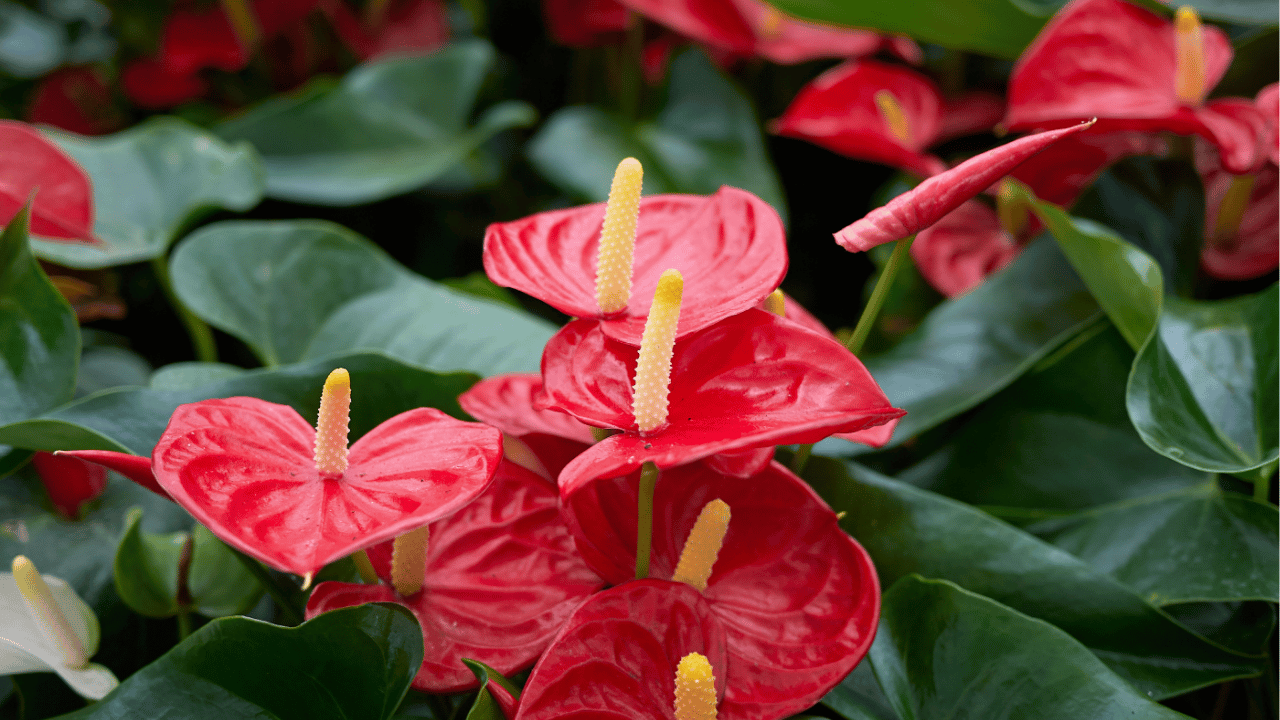Anthuriums, with their vibrant spathes and glossy leaves, are popular indoor plants that bring a tropical touch to any space. Though relatively hardy, they require specific care to truly thrive and display their full beauty. For seasoned gardeners, mastering the subtle nuances of anthurium care can lead to more vibrant blooms and healthier foliage. Here are 10 detailed tips to ensure your anthurium flourishes.
1. Provide Bright, Indirect Light
Anthuriums thrive in bright but indirect sunlight. Direct sunlight can scorch their delicate leaves and flowers, causing unsightly brown spots. Position your plant near an east-facing window, or use sheer curtains to filter the light.
When grown in low light, anthuriums may survive, but they won’t bloom as frequently. If you notice slow growth or lack of flowers, increasing light exposure with grow lights or relocating them can boost their vigor.
2. Maintain Consistent Warmth
As tropical plants, anthuriums need consistently warm temperatures between 65-80°F (18-27°C). Avoid exposing them to cold drafts or placing them near heating vents, which can cause sudden temperature shifts.
Ensure the temperature remains stable, especially during colder months. If your plant is near a window, monitor for cold drafts or frosty conditions, as temperatures below 50°F can cause irreparable damage.
3. Water Sparingly but Thoroughly
Anthuriums prefer to dry out slightly between waterings. Overwatering can lead to root rot, while underwatering can cause wilting. Wait until the top inch of soil is dry before watering thoroughly, ensuring excess water drains away.
Always check the soil moisture with your finger before watering. In winter, reduce the frequency of watering, as the plant’s growth slows down and it requires less hydration.
4. Use Well-Draining, Chunky Soil
Proper drainage is essential for anthuriums. A mix of orchid bark, perlite, and peat moss provides the ideal environment, allowing for aeration while retaining some moisture. Avoid using regular potting soil as it can compact and suffocate the roots.
Repot your anthurium every 1-2 years to refresh the soil and prevent root binding. Ensure the pot has adequate drainage holes to avoid water stagnation, which can cause root problems.
5. Boost Humidity Levels
Anthuriums thrive in environments with 60-80% humidity. If the air in your home is too dry, especially during winter, the plant’s leaves may turn brown at the edges. Use a humidifier or place the pot on a tray filled with pebbles and water to maintain moisture around the plant.
You can also mist the plant lightly every few days, though avoid over-misting, as consistently wet leaves can invite fungal diseases. Grouping plants together can also naturally boost humidity.
6. Fertilize Lightly but Regularly
Anthuriums benefit from light, balanced fertilization during their growing season (spring and summer). Use a slow-release or liquid fertilizer with a balanced ratio like 20-20-20, diluted to half strength, every 6-8 weeks.
Over-fertilizing can cause salt buildup, which burns the roots. Flush the soil with water every few months to remove excess salts and promote healthy growth.
7. Prune Dead Leaves and Spent Flowers
Regular pruning encourages new growth and keeps your anthurium looking its best. Remove any yellow or brown leaves, as well as spent flowers. Use sterilized scissors to avoid spreading any disease.
Removing old flowers also encourages the plant to focus its energy on producing new blooms. Inspect your plant every few weeks and remove any unsightly or damaged foliage for optimal growth.
8. Repot When Root-Bound
Anthuriums grow best when their roots have space to spread. If you notice roots poking through the drainage holes or the plant appears stunted, it’s time to repot into a larger container.
Choose a pot 1-2 inches larger in diameter and refresh the soil mix. Be gentle when handling the roots to prevent damage, and water thoroughly after repotting to help the plant adjust to its new environment.
9. Control Pests Proactively
Common pests like spider mites, aphids, and mealybugs can target anthuriums. Regularly inspect the leaves, particularly the undersides, for any signs of infestation. Treat minor infestations promptly using neem oil or insecticidal soap.
To prevent pests, maintain good air circulation around your plant and avoid over-watering, as damp conditions can attract bugs. Isolate new plants for a couple of weeks before introducing them to your collection to prevent pest spread.
10. Ensure Proper Air Circulation
Good air circulation is key to preventing fungal diseases and promoting healthy growth in anthuriums. Avoid overcrowding your plants and ensure they have space to breathe. A fan set on low speed nearby can help circulate air in humid environments.
Poor circulation, especially in humid conditions, can lead to fungal issues like root rot or leaf blight. Keeping the air moving around your plant can significantly reduce the risk of disease and improve its overall health.

